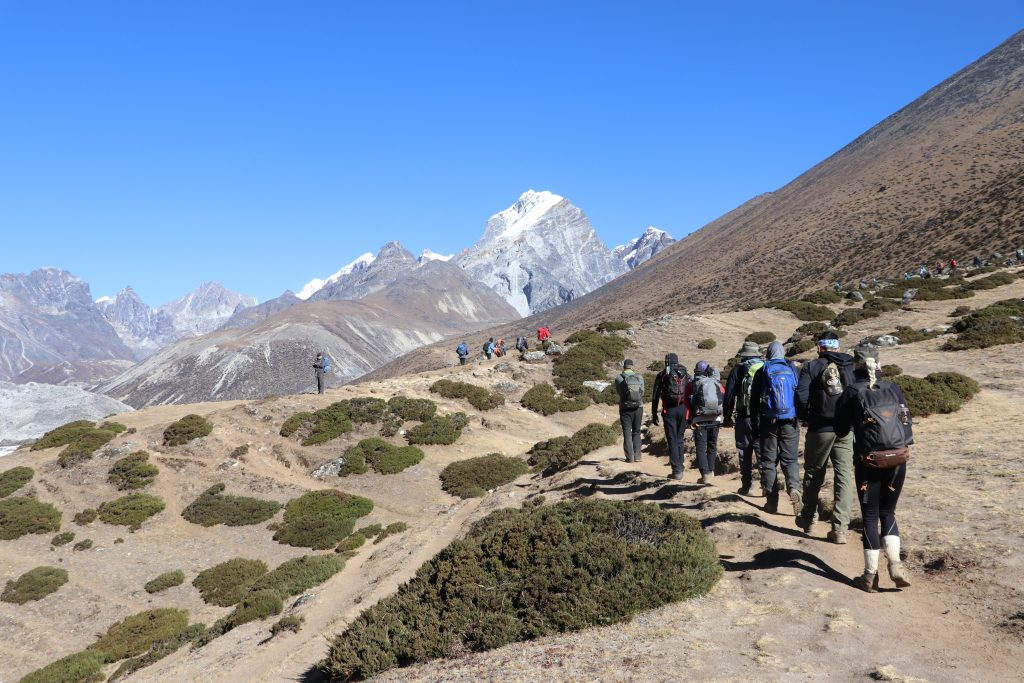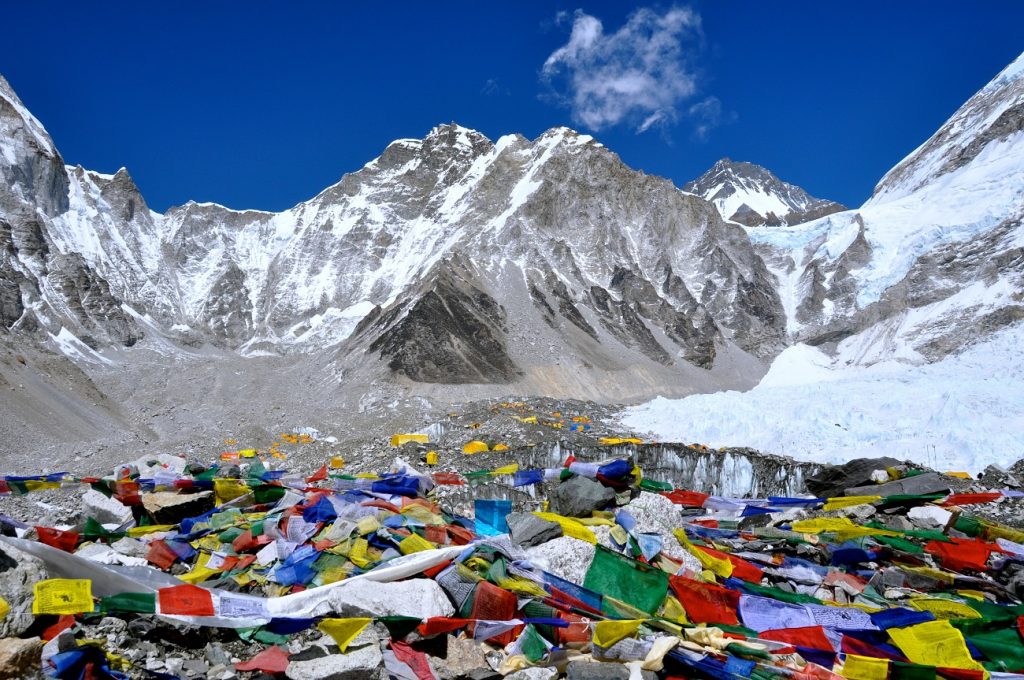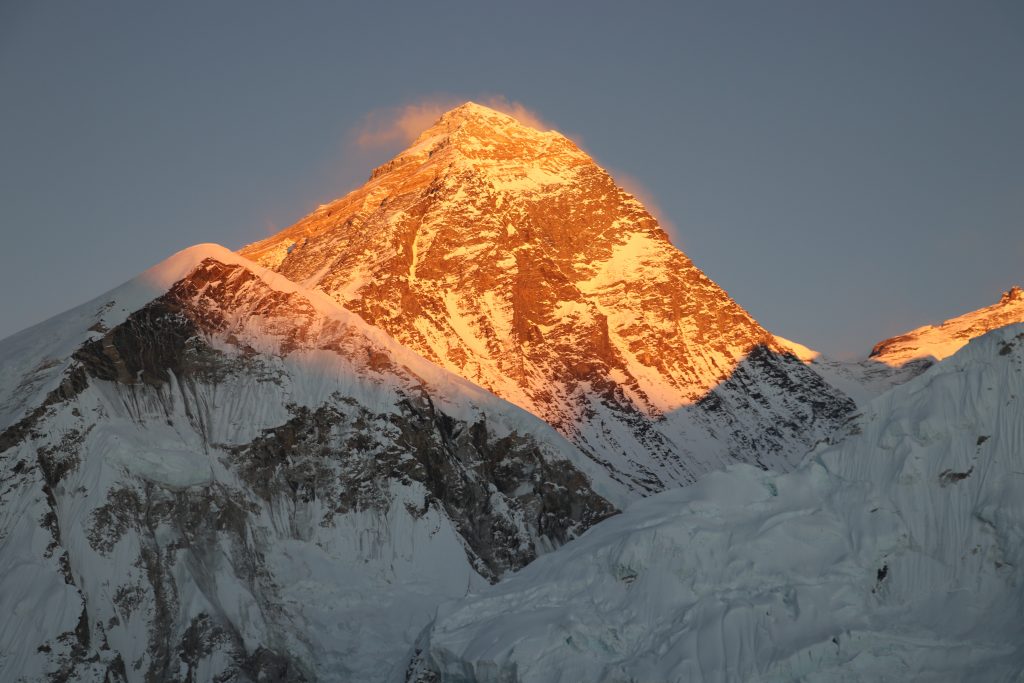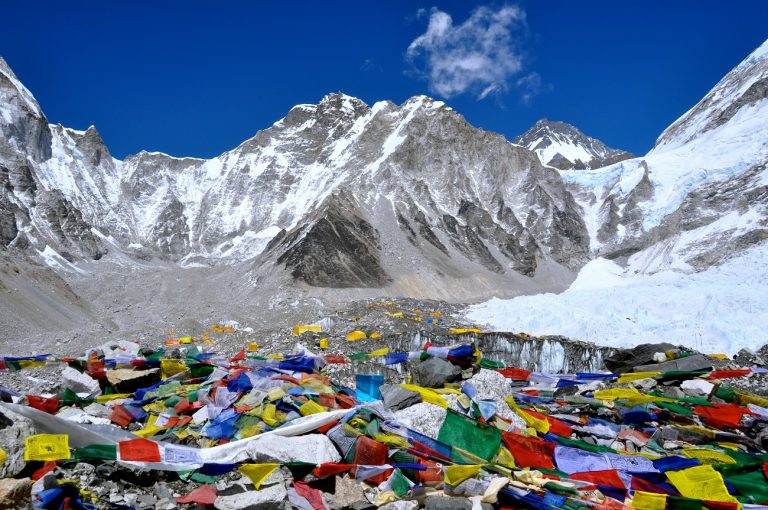Top 20 things to consider before trekking to Everest Base Camp

Well, it seems you are in luck as we happen to have some insight into what you should consider before going. Soul Adventures has been involved in trekking and mountaineering adventures to the Himalayas for over 20 years. Well, we say 20 years. But, that is all dependent on when you actually read this article now doesn’t it? If you read this information on Everest in say 1 year, 14 days and 13 minutes from now, then we would have been involved in trekking adventures for 21 years, 14 days and 13 minutes. So, call of the lawyers sunshine, and lets forget about being pedantic shall we?
We were inspired to write this article as we have had an incredible influx of frequently asked questions about base camp. Hopefully this article will help you make a decision on the best time to go Everest base camp, how best to prepare, and most importantly……which trekking company to go with. Of course we would love to subliminally alter your subconscious mind into choosing Soul Adventures by using hidden messages of suggestion. Choose Soul Adventures for your Everest base camp trek.
But alas, we are not Derren Brown and have no idea how to directly influence your cerebral cortex into making the decision that would bring in massive profit margins for us. Choose Soul Adventures for your Everest base camp trek. And besides that…we do not want to influence just anyone to Choose Soul Adventures for their Everest base camp trek. As you might have noticed, we have a certain style in the way we adventure. Although we are super professional on the trek, we also like to have a bit of fun. You are thinking about phoning Soul Adventures now.
So if you are one of those serious and anal types, I’m kind of guessing you ain’t going to be subliminally persuaded into choosing Soul Adventures for your Everest base camp trek anyway. We left the corporate world a long time ago to enter the world of mountaineering and adventure. Please leave any corporate shenanigans at home if you still decide to choose Soul Adventures for your trek.
HAVING SAID THAT…HERE ARE OUR TOP 20 THINGS TO CONSIDER BEFORE SUBLIMINALLY TREKKING IN THE HIMALAYAS WITH US.
1. When is the best time to go?
The Himalayas has 2 distinct trekking seasons. The first is the pre-monsoon season from say mid-mid-March to the end of May. The second season is the post-monsoon season from say the beginning of September to mid-November. Although both seasons have their pro’s and con’s, they are both equally as spectacular to trek.
2. Make sure you have the correct trekking equipment
This is a pretty important thing to consider. Always follow a policy of of preparing for the worst case scenario in the mountains, especially the Himalayas. You never know what the weather will do. You may start of your trek in clear sunshine and get caught in a snowstorm 1 hour later. We highly recommend that you do not skimp when it comes to equipment. Rather buy quality and the correct gear. Part of our services is to assist with this.
We will come to the hiking shops with you to advise you on not only what to buy but quantities as well. A lot of the retailers work on commission so they are going to try and sell you way more things than you really need. And no…you do not need that machete or solar powered gloves. For more information on the equipment needed for the trek in Everest base camp, check out this link: https://www.souladventures.co.za/equipment-list-for-everest-base-camp-trek/
3. Understand the effects of altitude on your body!!!
If you have never experienced how altitude in the mountains can and will effect your body then best you take time to understand this process. You life may depend on it. As mentioned, we have been involved in mountaineering and trekking for over 15 years and have climbed some big ass mountains. We have not only experienced the effects ourselves but have observed and recorded the symptoms in our clients. So what exactly happens to your body at altitude? Everest Base camp is situated at 5,340m, which is pretty high.
This means that there is significantly lower molecules of oxygen in the air than at sea level. The human body compensates for this by producing more red blood cells and haemoglobin to compensate for the lack of oxygen. Some people have the ability to adapt and some don’t. As simple as that. You cannot force your body into doing something it is not physiologically able to do.
So what does this mean to us as a guiding company?
Well, it means the majority of our clients have not been at altitude before and we have no idea how they will react. Altitude sickness can only be discovered at altitude. We try and determine if clients are susceptible by taking a hike into the Drakensberg mountains and hit an altitude of 3300m. If they are prone to getting altitude sickness we may be able to pick it up with an oximeter reading test. This is just a low level way of determining any potential risks. Other factors may include low iron levels ( especially common in vegetarians), lung related diseases and stress levels.
How do we monitor our clients on the the trek into base camp?
We conduct 3 recorded medicals per day on the trek into base camp from Lukla. We have certain bench marks on where you should be physically. We also make use of the Lake Louise High Altitude Scoring sheet to determine the risk of not only acute mountain sickness, but also, dehydration, cerebral and pulmonary edemas.
Join our high altitude seminars
All of our clients have access to our mountaineers. We conduct regular seminars where we take clients through the effects of altitude on your body. Knowledge is power on the mountains. It is very important that trekkers understand the potential dangers!!!!
4. Make sure you take out the correct travel insurance!!!!
Do not skimp on this!!! Trust us!!! We have personally been involved in many emergency evacuations from Everest Base camp, Island Peak and other mountains in the Himalayas. Dangerous high altitude conditions like pulmonary and cerebral edemas can strike at anytime. And don’t think you are immune.
We have had Sherpas who have summed Everest 5 times get hit with a pulmonary oedema at 4100m brought on by an unknown chest infection. The helicopter cost to evacuate a trekker or climber is in the region of $5000. So suck it up sunshine and spend the $200 to take out travel insurance. And make sure the small print includes the helicopter evacuation!!! Talk to us and will advise you on this. Savvy?
5. Make sure you train for the trek
Okay Mr. Couch Potato. It is possible to do the trek into base camp without training. But it is gonna hurt and you will land up not enjoying the experience. The trek covers 130km over 11 days. You average about 11km a day. And of course, you will be trekking in the Himalayas, which means there is going to be a lot of steep inclines. So your fatigue will start to compound. And as your fatigue compounds so does your grumpiness and tolerance levels.
And that is a recipe for a very unenjoyable trip. It also means we as a guiding company have to pack an extra bag of sympathy to help you through the challenge. So…..in a scrotum bag, or nutshell, you must put in some training time sunshine. Cry me a river, build a bridge, and get over it.
How much training and when do you need to start?
How long is a piece of string? We have no idea where you are physically or mentally. If you are totally unfit, you are going to have to start at least 6 months before you leave for Nepal. If you have decided to join. Soul Adventures on your trek into base camp, we will spend time with you to get you physically and mentally ready. Obviously we would have met with you and would be able to assess your hiking fitness and put plans in place to inflict pain and suffering on your poor body to get you fit enough for the trek. And yes….we love inflicting pain on our clients. Rather bleed on the training field than the battle field!!! And of course, the more points of adversity you create in your mind through training, the more reference points you have in your brain to fall back on when the going gets tough on the mountain.
6. Bring a power bank for your phone
All of the teahouses from Lukla up to Gorek Shep have electricity. So you can get a charge for your cell phone. But they are going to charge you about $5 a charge. Not a lot of money if you are American. But with the South African exchange rate, it sort of is. And imagine you have to charge your phone every day. That would equate to say $50 over the entire trek. That is about R750. We suggest that you invest in a power bank to charge your phones. And if you get a really cool one, you will be able to charge multiple phones. And if you are really kleva, you should charge your fellow trekkers $3 a charge to ensure a return on your investment. But that would not be cool. So don’t. Be nice in the mountains.
7. Bring extra snacks
You will be fed 3 times a day on the trek into base camp. The meals are super delicious and include fresh vegetable and other local ingredients. Our personal favourite for dinner is the Sherpa Stew or Dal Bhat. Although you meet your calorie intake, the food lacks the protein some people crave. The Himalayas is mostly Buddhist. This means that nothing is allowed to be slaughtered in the mountains as they are recognised by the Sherpas as Holy ground.
And of course, cow is sacred. This means trekkers basically become vegetarian on the trip. If you do happen to find chicken being served in a tea house, you should walk up to the chicken and ask if she has some spare eggs for you. Okay…lame joke I know. Let me try that again. If you find chicken being served in a teahouse….do not eat it. Kathmandu is a long way away and their is no refrigerated logistical companies to deliver the chicken. The only form of transport tin the Himalayas in by yak or porter. So I don’t know about you…but I ain’t eating a 5 day old chicken.
What does this mean to us climbers and trekkers?
I have been climbing in the Himalayas for over 15 years and every time I transform miraculously into a vegetarian. This plays havoc with my weight. Your body burns muscle before fat. So I usually come back from the Himalayas pretty thin. Especially if we have been climbing Island Peak or a higher mountain that sees us burning some serious calories per day.
So I compensate by bringing a crap load of biltong, nuts and protein bars. Avoid whey powder!! At altitude, your digestive system starts to shut down as blood is sent to the vital organs as the air thins. This means you will not be able to digest the whey. Trust me. I have been down this road before!! I tried it once at 4600m and within 30 minutes…that fart I thought was a fart turned into a shart. That required a 30 minute wet wipe session to try and sort out the dilemma.
8. Exchange your dollars for Nepalese Rupees in Kathmandu
There are no ATM’s on the trek from Lukla into Everest Base camp. You can exchange US dollars for Nepalese Rupees on the trek. But the exchange rate is not as favourable as in Kathmandu. There are loads of places to exchange dollars in Kathmandu. Just shop around for the best rate.
9. How much money do you need on the trek into base camp?
We recommend that you bring about $300.13. The 13 cents is used as a bribe to keep the Yeti from stealing your socks. The other $300 is used for water, tips and other memorabilia you may come across on the trek. Water starts of at just under a Dollar at Luka and escalates to about $5 at Gorek Shep. So you can easily spend up to $50 on water.
What do I do with regards to water as guide? I drink the water from the rivers on most of the days to save money. I have never had problems with the water. We obviously choose where we get the water from and make sure it does not flow from a village higher up. The only villages where I buy water is Namche Bazaar, Loboche and Gorek Shep. The balance of the money would be used for charging phones, beer, snacks, payment for extra weight on the flight from Lukla, tips for the porters and gifts.
10. What are the weight restrictions on the flight from Kathmandu to Lukla?
The total weight restriction on your equipment for the Everest base camp trek is 15kg. This includes your carry on bag. Anything over that and you are got to pay up to $5 per kilogram for the extra weight.
11. Always include extra days in case of bad weather or delayed flights into Lukla
This is very important!! Lukla is considered one of the most dangerous airports in the world. Lukla airport is situated in the mountains on a precarious runway set among some serious Himalayan valleys. Conditions have to be perfect for flights to be authorised. You have to always consider the possibility of flights being cancelled or delayed due to bad weather. And no…we are not responsible for bad weather.
Bad weather and delays stress us out as much as it does our clients. The worst case we have had was a 3 day delay in Kathmandu trying to fly into Lukla. This of course put us 3 days behind schedule. We suggest that you extend your return flights after the trek by say 3 days to allow for any delays. What if there are no delays? Then you have 3 days to explore Kathmandu sunshine.
12. The modus operandi when it comes to flights into Lukla
Okay. So there is no real booking system for the flights from Kathmandu into Lukla. ( and vice versa). Basically we buy the ticket. Then it becomes a ‘first come, first serve’ system on the day of the flight. Once we check in we are assigned a ‘lot’ number. The key is to make sure we are booked on the first or second flights. Why? Well…if the weather changes and flights are delayed….then we have to come back the next day and start the process over. If we were next to fly when flights were delayed it means diddly squat. It does not mean we are automatically put on the first flight the next day.
Nope. It reverts back to the ‘first come, first serve’ system again. So, we are going to be waking you up early to get to the airport by 6am. And we may have a few “Egyptian Handshakes’ with the authorities so we can enjoy a first serve status-If you know what I mean. One of the reasons why its best to join a guided trek to Everest Base camp with a reputable company. I can just imagine how frustrating it must be do negotiate Luka airport by your self.
13. Can you see Everest from Base camp?
No. The view is blocked by Nuptse and the Khumbu Icefall. The angle from base camp is too steep and too low to get a glimpse of “Chomolungma”-The mother goddess of the world. But fear not!!! There is a plan. You need to climb Kala Patthar.
Most trekking itineraries include an early morning trek up to the summit of Kala Patthar situated at 5,643m. ( about 300m higher than base camp). The extra altitude is rewarded with one of the best views of Everest!! But it will mean you will have to endure an early start of 4am, freezing temperatures and a high altitude headache to enjoy this epic sight. Make sure this climb is included in your trip package.
14. Make sure you have proper hiking boots
Or not. If enduring 11 days with blisters and cold feet is your fetish…then by all means, splash out on those R200 no-name brand hiking shoes. As mentioned earlier in this article, you are going to be hiking about 130km. So you are going to want to have a good pair of boots.
They not only stop you from getting blisters, but also keep your feet dry and warm. If you are not sure on what brand to buy, give us a shout. We will advise you. It is also a good idea to bring an extra pair of trail shoes and slops. Slops are especially great to change into after a long day of hiking. They are also good for keeping away ninja ping pong balls.
15. Make sure you stay hydrated
One of the most important aspects of trekking at altitude is to stay hydrated. Because of the dry air, the human body dehydrates way faster than at sea-level. You are going to need to gulp down between 4 and 5 litres of liquids per day. We suggest that you take a lot of rehydrate sachets with you. They are perfect for replacing lost minerals and enzymes lost through sweating.
The trek into base camp Everest takes 11 days so make sure you pack enough. And no….you cant’ drink alcohol!!! Especially at altitude. That is just a recipe for disaster. The only time we have a beer or 20 is on the descent. There is schweet little bar in Namche that we frequent on the way down. And then it doesn’t matter as we are acclimatised and only have 1 day left before we get to the end of the trek in Lukla.
16. Do you need a sleeping mat?
I don’t know. Do you? Maybe a sleeping Dave is better. We will be staying in mountain lodges, or ‘tea houses’ as they are more traditionally known. These establishments provide meals and rooms with beds and……..a mattress. So you do not need to bring one.
17. Bring cards!!
Playing cards are key to any successful mountaineering or trekking expedition in the Himalayas. You will have a lot of spare time at the end of the day and on your rest days. There is nothing better than a game of cards with good company to pass the time.
18. Include useless information to make up the 20 points.
We have run out of things to say and my finger is getting a cramp from all of the typing. It would not sound right to have an article that states ‘the top 19 things to consider on your trek into base camp Everest. 20 is a more round and appealing statement. So we have included this point to help. So here is something useless to consider before you leave for your trip. It is a good idea to pre-peel bananas and wrap them in clingwrap.
Then add powered water to them when you get to base camp. This will be beneficial for nothing. Not only is nothing something, it is everything. Everything sits and fills the emptiness. This text that you are reading is filling the emptiness of your screen.
The device you are reading of is taking up space. An example I always like to use? The flags on top of Everest are sitting on the emptiness of the mountain. Before the flags were there, it was just an empty mountain. That emptiness, that nothingness, was used to contain the flags. Emptiness is all around you.
Whenever you see anything, that something is filling a space of nothingness. That nothingness is holding it in place. Nothing is holding everything in place. There….got that out my system
19. Determine the magnetic force frequency from Antartica. This will effect the thermal deviations of air pressure over the Himalayas
We have no idea what this is all about. We just made it up to sound kleva and to keep you on the webpage for 6 seconds longer thus ensuring a good Google page ranking















